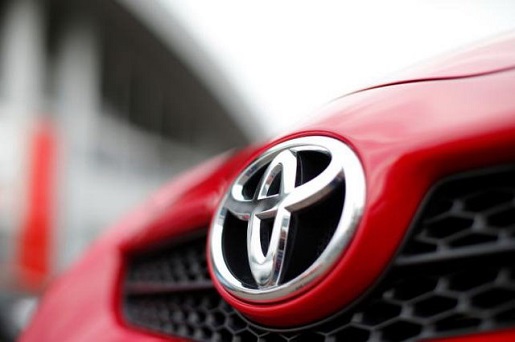Toyota was not always a car manufacturer. After inventing the world’s first automatic loom, Sakichi Toyoda created the Toyoda Spinning and Weaving Company.
 Khodrocar_Impressing the Platt Brothers, a British company, so much with this invention, Toyoda sold the production and the rights. He gave this money to his son, Kiichiro, to research and develop automotive technology for Toyoda Spinning and Weaving Company.
Khodrocar_Impressing the Platt Brothers, a British company, so much with this invention, Toyoda sold the production and the rights. He gave this money to his son, Kiichiro, to research and develop automotive technology for Toyoda Spinning and Weaving Company.This lead to the creation of the Toyoda Automobiles in 1933, under the instruction of Kiichiro Toyoda. In 1935 the manufacturer launched their first passenger car, the A1. In April 1936, the first Toyoda passenger car was completed, under the name Model AA. It was also sold at 40 yen cheaper than a Ford or GM car.
Toyoda did not stay ‘Toyoda’ for very long. According to some, Toyda exporting to the USA and the company wanted a logo that would work in both Japanese and English.
So they held a public competition for a new name. The winning entry, out of some 27,000, was Toyota. It was chosen mainly because of the number eight. The number of strokes to write Toyota in Japanese was eight. And, in Japan, eight is considered a lucky number.
This has been dismissed by some, and the change of name has instead been put down to the internationalisation of the company, and that Toyota sounds better. Regardless of what you believe, Toyoda became Toyota Motor Co in 1937.
Interestingly, the city of Koromo, in the Aichi region and where the company is based, was renamed Toyota City after the company that created a number of jobs for the region.
But by this time, World War Two was in full swing. And, between the years of 1936 and 1943, only 17,757 cars were made. The corporation found success building trucks and busses. It was after the war that they really came into their own as a car manufacturer.
In 1945 the American military gave permission to start up peacetime production. And, in 1947, the Toyopet was born.
The Toyopet Crown was Toyota’s first venture into the US market. However, it was far from the success Toyota had hoped and was actually pulled from the States in 1961 after fewer than 2,000 were sold.
?
The animosity towards Japan and its cars didn’t last too long due to the 1973 oil crisis. Therefore, the US was ripe for small, economical cars that were good in fuel economy. This prompted Toyota to look to creating factories in the US.
It was around this time, in 1982, that Toyota entered a joint venture with General Motors. And thus, the New United Motor Manufacturing Inc. was created.
It was in 2009 that General Motors announced they were no longer continuing with this joint venture. Toyota soon followed suit and the NUMMI plant closed its doors in 2010.
In 1983, Toyota were given the go-ahead for the Circle F project. The result of this project was the LS 400. The first ever Lexus was debuted in 1989. Lexus saw continuous success and have gone onto become Japan’s largest-selling brand of premium cars.
Interestingly, though, it was only in 2005 that Lexus were branded Lexus in Japan. Before that, all Lexus’ were launched under the Toyota marque.
The new Prius Eco currently ranks as the most fuel efficient gasoline-powered car available in the US. And it’s come a long way since its conception.
The Prius was debuted in 1995 and went on sale in Japan only in 1997. However, it had been imported privately to at least the UK, Australia, New Zealand and the USA. Since then, the Prius has gone from strength to strength and currently accounts for 63% of the 9 million hybrids sold worldwide by Toyota.And we’re here in the present day. In November 2015, Toyota announced that it would be investing over 1 billion dollars over the next five years into artificial intelligence and robotics research. This year they invested in ridesharing phenomena Uber with the intention of offering new leasing options for its drivers. They also said that they would use the partnership to ‘speed up their research efforts in areas such as driverless cars’. So maybe one day in the future we’ll be jumping into a driverless Toyota Uber. Quite the contrast to the Toyoda Spinning and Weaving Company.
Latest News


